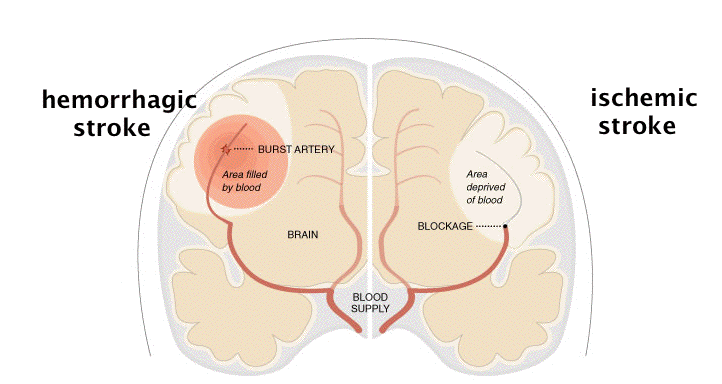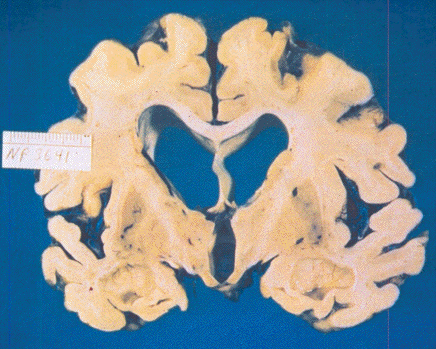Aging
Aging
[Note: The following quotations (in italics) are from Mental Health: A Report of the Surgeon General, U.S. Public Health Services (1999), available at http://www.surgeongeneral.gov/library/mentalhealth/home.html]
Successful Aging
With improved diet, physical fitness, public health, and health care, more adults are reaching age 65 in better physical and mental health than in the past. Trends show that the prevalence of chronic disability among older people is declining: from 1982 to 1994, the prevalence of chronic disability diminished significantly, from 24.9 to 21.3 percent of the older population (Manton et al., 1997). While some disability is the result of more general losses of physiological functions with aging (i.e., normal aging), extreme disability in older persons, including that which stems from mental disorders, is not an inevitable part of aging (Cohen, 1988; Rowe & Kahn, 1997).Normal aging is a gradual process that ushers in some physical decline, such as decreased sensory abilities (e.g., vision and hearing) and decreased pulmonary and immune function (Miller, 1996; Carman, 1997). With aging come certain changes in mental functioning, but very few of these changes match commonly held negative stereotypes about aging (Cohen, 1988; Rowe & Kahn, 1997). In normal aging, important aspects of mental health include stable intellectual functioning, capacity for change, and productive engagement with life.
Descriptive research reveals evidence of the capacity for constructive change in later life (Cohen, 1988). The capacity to change can occur even in the face of mental illness, adversity, and chronic mental health problems. Older persons display flexibility in behavior and attitudes and the ability to grow intellectually and emotionally. Time plays a key role. Externally imposed demands upon one’s time may diminish, and the amount of time left at this stage in life can be significant. In the United States in the late 20th century, late-life expectancy approaches another 20 years at the age of 65. In other words, average longevity from age 65 today approaches what had been the average longevity from birth some 2,000 years ago. This leaves plenty of time to embark upon new social, psychological, educational, and recreational pathways, as long as the individual retains good health and material resources.
In his classic developmental model, Erik Erikson characterized the final stage of human development as a tension between “ego integrity and despair” (Erikson, 1950). Erikson saw the period beginning at age 65 years as highly variable. Ideally, individuals at this stage witness the flowering of seeds planted earlier in the prior seven stages of development. When they achieve a sense of integrity in life, they garner pride from their children, students and protégés, and past accomplishments. With contentment comes a greater tolerance and acceptance of the decline that naturally accompanies the aging process. Failure to achieve a satisfying degree of ego integrity can be accompanied by despair.
Cohen (in press) has proposed that with increased longevity and health, particularly for people with adequate resources, aging is characterized by two human potential phases. These phases, which emphasize the positive aspects of the final stages of the life cycle, are termed Retirement/Liberation and Summing Up/Swan Song.
Retirement often is viewed as the most important life event prior to death. Retirement frequently is associated with negative myths and stereotypes (Sheldon et al., 1975; Bass, 1995). Cohen points out, however, that most people fare well in retirement. They have the opportunity to explore new interests, activities, and relationships due to retirement’s liberating qualities. In the Retirement/Liberation phase, new feelings of freedom, courage, and confidence are experienced. Those at risk for faring poorly are individuals who typically do not want to retire, who are compelled to retire because of poor health, or who experience a significant decline in their standard of living (Cohen, 1988). In short, the liberating experience of having more time and an increased sense of freedom can be the springboard for creativity in later life. Creative achievement by older people can change the course of an individual, family, community, or culture.

Alzheimer’s disease, a disorder of pivotal importance to older adults, strikes 8 to 15 percent of people over the age of 65 (Ritchie & Kildea, 1995). Alzheimer’s disease is one of the most feared mental disorders because of its gradual, yet relentless, attack on memory. Memory loss, however, is not the only impairment. Symptoms extend to other cognitive deficits in language, object recognition, and executive functioning.3 Behavioral symptoms—such as psychosis, agitation, depression, and wandering—are common and impose tremendous strain on caregivers. Diagnosis is challenging because of the lack of biological markers, insidious onset, and need to exclude other causes of dementia....There may be genetic factors involved in Alzheimer's, and it can run in families. A reduction in the amounts of acetylcholine in the brain seems to play a part. Autopsies reveal real physical changes, including "neurofibrillary tangles" and "neuritic plaques." On the other hand, there are several things that appear to delay (but not cure) Alzheimer's, including having certain genes and continued education. A great deal of research is being done on Alzheimer's, and we look forward to a day when it no longer looms over the last years of people's lives.The diagnosis of Alzheimer’s disease not only requires the presence of memory impairment but also another cognitive deficit, such as language disturbance or disturbance in executive functioning. The diagnosis also calls for impairments in social and occupational functioning that represent a significant functional decline (DSM-IV). The other causes of dementia that must be ruled out include cerebrovascular disease, Parkinson’s disease, Huntington’s disease, subdural hematoma, normal-pressure hydrocephalus, brain tumor, systemic conditions (e.g., hypothyroidism, vitamin B12 or folic acid deficiency, niacin deficiency, hypercalcemia, neurosyphilis, HIV infection), and substance-induced conditions....
A further challenge in the identification of Alzheimer’s disease is the widespread societal view of “senility” as a natural developmental stage. Early symptoms of cognitive decline may be excused away or ignored by family members and the patient, making early detection and treatment difficult. The clinical diagnosis of Alzheimer’s disease relies on an accurate history of the patient’s symptoms and rate of decline. Such information is often impossible to obtain from the patient due to the prominence of memory dysfunction. Family members or other informants are usually helpful, but their ability to provide useful information sometimes is hampered by denial or lack of knowledge about signs and symptoms of the disorder....
Alzheimer’s disease is a prominent disorder of old age: 8 to 15 percent of people over age 65 have Alzheimer’s disease (Ritchie & Kildea, 1995). The prevalence of dementia (most of which is accounted for by Alzheimer’s disease) nearly doubles with every 5 years of age after age 60 (Jorm et al., 1987)....
